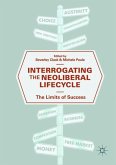Serialized storytelling provides intriguing opportunities for critical representations of age and aging. In contrast to the finite character of films, television narratives can unfold across hundreds of episodes and multiple seasons. Contemporary viewing practices and new media technologies have resulted in complex television narratives, in which experimental temporalities and revisions of narrative linearity and chronological time have become key features. As the first of its kind, this volume investigates how TV series as a powerful cultural medium shape representations of age and aging, such as in "Orange Is The New Black", "The Wire" or "Desperate Housewives", to understand what it means to live in time.
»Die Darstellung des menschlichen Alterungsprozesses sowie von alten Menschen in den Narrativen des Mainstream-Fernsehens ist häufig unkonventionell - gleichzeitig jedoch wird diese Neuartigkeit immer noch mit stereotypen Elementen aufgeweicht. Es ist ein großer Verdienst dieser Publikation, dass in den elf durchweg sehr guten Aufsätzen beide Aspekte differenziert herausgearbeitet werden.« Vincent Fröhlich, MEDIENwissenschaft, 4 (2016) »The book can thus be read as a first step in this direction, and it clearly outlines the desiderata to be dealt with in future studies.« Andreas Hudelist, www.theaterforschung.de, 08.04.2016 Besprochen in: tv diskurs, 1 (2017), Lothar Mikos







